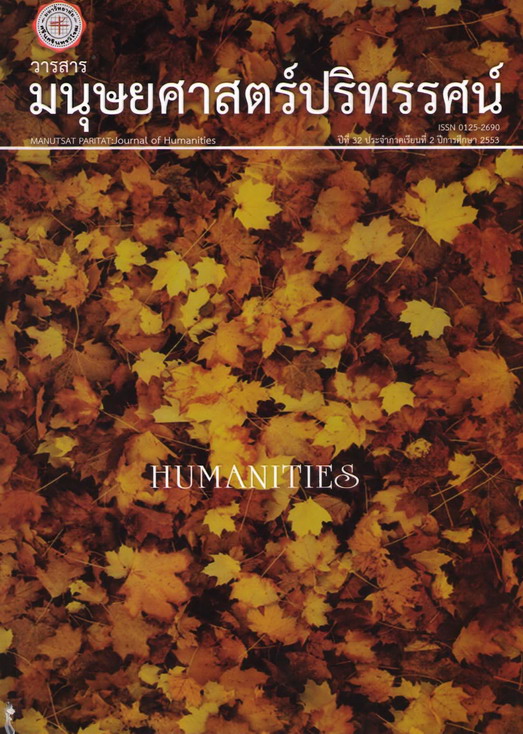ลักษณะการใช้คำบ่งชี้ภาษาเกาหลี กรณีศึกษานิสิตวิชาเอกภาษาเกาหลีชั้นปีที่ 1
Abstract
This research aimed at investigating the use of particles in the Korean language offirst-year students majoring in Korean. This research was conducted in 2008, and the sampleincluded 162 first-year, Korean-majored students in six universities in Thailand. The researchtool was a two-part exam, multiple-choice and written. The analysis included exploring theparticles that the participants in each university had learned, and studying the scores collectedfrom the exam. It was found that in the multiple-choice section, the students had the mostdifficulties in identifying the adverb particle and the subject particle ù Inthe written section, it was found that the students made errors in five areas. First, the studentsused wrong kinds of particle to form words (41.2%). Second, they used particles that violategrammatical rules (23.2%). Third, they did not use particles (23.4%). Fourth, they used morethan one particle to construct a word (7.6%). Lastly, they misspelled particles (4.6%).In the research, three causes of errors were identified: first-language interference,confusion derived from the rules of particles in the Korean language itself, and the lack ofknowledge about particles in the language. From the research, possible solutions, thus, areteaching students to understand the word-forming rules, to use the right types of particles fordifferent kind of words, not to use more than one particle, and, lastly, to be careful about wordswith a final consonant which require a different particle.Downloads
Published
2013-01-25
Issue
Section
บทความวิชาการ


